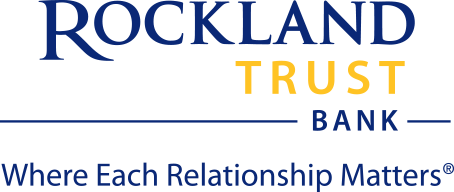

Today more than ever, businesses have so many options for paying their bills. The four most common are:
Two of our Treasury Management experts, Lisa Morrissey and Stacey Coyne, often get asked what methods are the best for paying bills. The answer depends on a few variables.
How to Determine your Payment Options
There are three factors that help determine the best payment method for you and the recipient:
1. Checks
The traditional form of payment, and often used for B2B transactions. Checks are a popular form of payment however there are some businesses that are slowly phasing checks out in order to cut down on paper use.
Benefits
One benefit we see often is that there is typically no cost for depositing checks, making this a great, low-cost way to remit payment.
Drawbacks
From the depositor perspective, checks can take time to become available in an account. From the sender perspective, there can be a delay in reconciling your account. Checks unfortunately are also the top form of fraudulent payment.
Article that May Interest You: Seven Steps to Prevent Business Fraud
2. Wire
A wire transaction moves money electronically in real time both domestically and internationally.
Benefits
This payment method is typically used to move money quickly, often for one-time payments. Wire transactions allow you to move money internationally, where there tend to be less payment options. Unlike waiting for a check to clear, wire payments are available immediately.Drawbacks
Wiring money usually does incur a fee for the beneficiary as well as the originator, so it can get costly if you use it for vendors that you must make payments to on a regular basis. It’s important to discuss this option with the vendor you’re working with. For those who are time sensitive but not cost sensitive, this might be a good payment method.
Be aware: Once the money is wired, it is extremely difficult to get back.
You should be sure that you are sending the payment to the right person.
PRO TIP: Lisa and Stacey know customers who test wire transactions with a nominal amount first before sending the full amount to ensure that the correct recipient receives the funds. This may cost you a little extra in fees initiating two wires, but that validation can give you peace of mind which is priceless.
3. Automated Clearing House (ACH)
An ACH transaction is another way to move money electronically and it goes through a clearing house that transfers the funds from bank to bank.
Benefits
An ACH transaction typically takes one to two business days, which is usually quicker than a check. You can dispute an ACH, which you cannot do with a wire. An ACH transaction can be tested with a pre-note to ensure the routing and account number are valid. This added layer of security is important in protecting your business and money.
Drawbacks
Although the account and routing numbers are validated, the beneficiary names are not. So it’s important to confirm your recipient before initiating a transaction.
4. Credit Card
Credit cards are becoming the preferred method of payment for businesses.
Benefits
One of the benefits is that it consolidates the number of vendor payments which helps with the reconciliation process. The business only needs to worry about paying off the credit card each month. Business owners are also motivated by the perks such as cash rewards or points offered by credit card providers. Like ACH transactions, credit cards often offer some level of fraud protection and risk mitigation. Businesses can dispute incorrect charges if there is an issue.
Drawbacks
Credit cards often charge the receiver of the payment a fee, so it’s important to discuss with your vendor as this may change the price point. For vendors that offer a discount if an invoice is paid within a certain timeframe, the credit card charges may require them to rethink their pricing structure.
Article that May Interest You: Boosting Your Company's Cash Flow Mojo
What to know about security
One of the most important things you can do as a business owner is instill security controls for your payment methods, regardless of which one you use.
Download our Fraud Prevention Check List to learn more
If you have a dual control process in place for one payment type, make sure that you apply that across all types of payments. For example, if you have one person write a check and another person sign it, you should have one person set up a wire payment and a second person approve and release the payment.
At the end of the day, the right type of payment method will depend entirely on the amount of money and volume of payments. Consulting with our Treasury Management team is a great way to sort through your options and decide what is best for your business. The Rockland Trust Learning Center has articles about managing cash flow and other important business topics to help you, and your business thrive and reach your financial goals.Get the latest financial tips and advice by signing up to receive our emails.
Rockland Trust Online Banking gives you a variety of services that help you use and manage your accounts, whenever and wherever you want.
* indicates a required field.
Rockland Trust makes it easy to manage all of your accounts with our simple online portals.
Rockland Trust gives you a variety of services that help you use and manage your accounts, whenever and wherever you want.
* indicates a required field.



